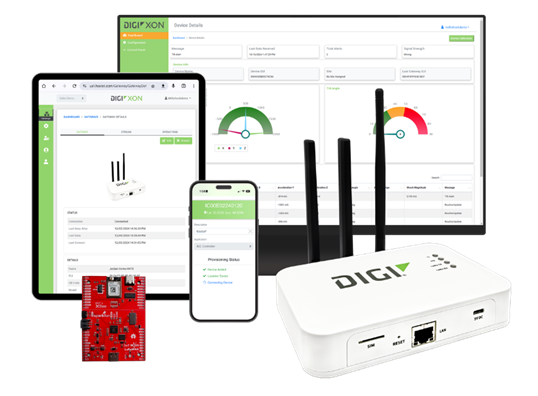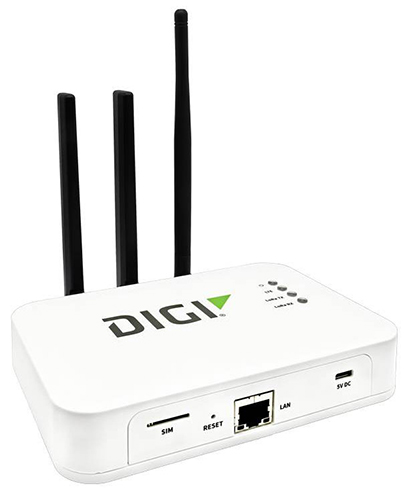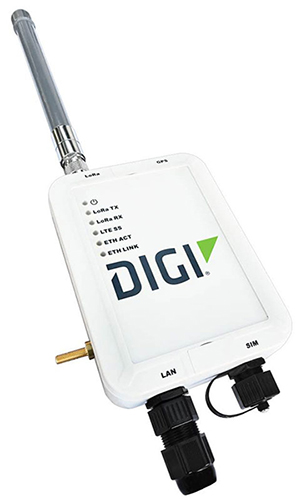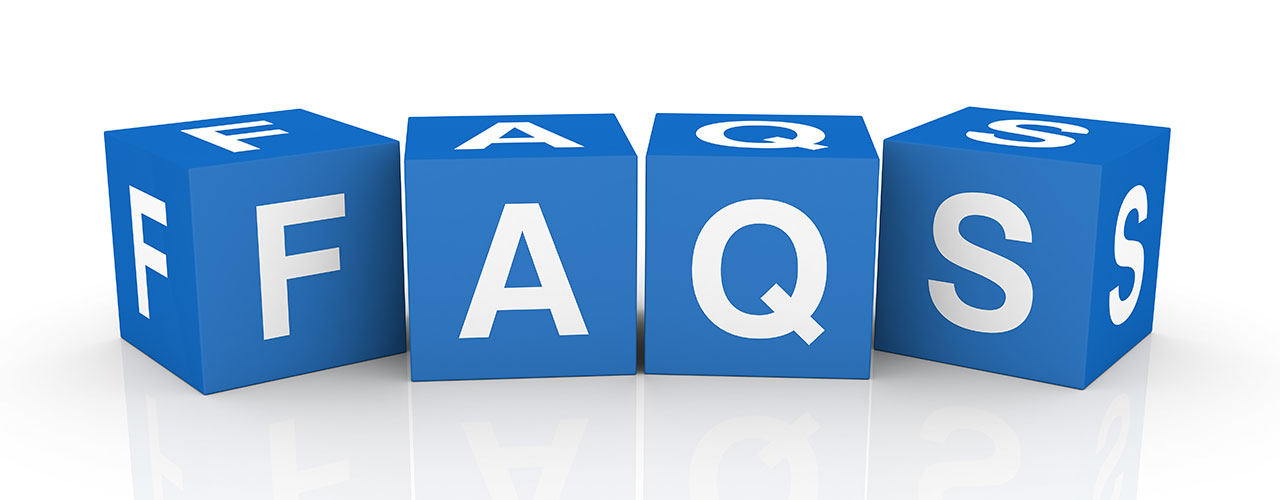LoRaWAN® is one of those acronyms that shows up a lot if you're working in IoT, asset tracking, or industrial automation. You hear about the range, the long battery life, and the low cost. And it all sounds great — until you try to build something real with it, like a LoRaWAN network. How do you put it all together? Do you have to build your own LoRaWAN gateway? (TLDR: No you don't!) Let's discuss.
At its core, LoRaWAN (Long Range Wide Area Network) enables long-distance, low-power communication between IoT devices and the Internet. The keyword here is “low-power” — devices can run for years on a couple of AA batteries or a coin cell battery. That’s a game-changer for use cases like smart agriculture, infrastructure monitoring, or distributed metering.
But LoRaWAN is not plug-and-play by default. Yes, there are wonderful companies building great products for LoRaWAN networks. If you’ve ever tried to deploy your own LoRaWAN gateway, you know that it can be tricky. From network servers to payload decoders to provisioning workflows, there’s a lot to wrestle with. That’s where most deployments hit friction. And that’s exactly why Digi X-ON® exists. Today we are going to focus on gateways.
What Makes LoRaWAN Valuable
The LoRaWAN standard, developed by the LoRa Alliance®, has some key differentiators that set it apart from other IoT network protocols:
LoRaWAN gateways operate in unlicensed bands, so you can deploy your own network without getting a telecom provider involved. That’s appealing to municipalities, industrial sites, and remote facilities who want total control over their infrastructure.
But again, the tech is only as good as the deployment experience. So, let’s talk about why most people give up — and how we’ve made that part better.
Three Levels of LoRaWAN Gateway Deployment: Choose Your Own Adventure
Let's look at three different scenarios for deploying gateways in LoRaWAN networks.
Level 1: The Science Project
You start with a Raspberry Pi, grab a concentrator board off Amazon, and follow a YouTube tutorial to build your own LoRaWAN gateway. You load up open-source tools like ChirpStack or TTN Stack. You might even get packets flying. But now you're staring down FCC certification, region-specific compliance, antenna tuning, and server-side routing logic. It's cool if you're a tinkerer — not so cool if you're trying take a product to market. We are glad you are interested in LoRaWAN, but you are going to need something more robust for an actual product.
Level 2: The Packet Forwarder Gateway
Now you’re using a proper LoRaWAN gateway — one from a vendor that lets you SSH in and configure packet forwarding. That is progress. But you still need to manage a separate LoRaWAN network server, decode payloads, secure the device, push updates, and set up cloud integrations. In other words, you’ve traded soldering irons for sysadmin tasks. You’re out of the lab, but not into production. To use typical LoRaWAN gateways like these, you must immerse yourself, or hire someone, to become an in-house LoRaWAN expert. Think of it as having to be your own ISP: Doable but most of us are fine just paying an ISP to be our ISP.
Level 3: The Digi X-ON Experience
This is where Digi X-ON® changes the game. Our HX-series LoRaWAN gateways (Digi HX15 and Digi HX20) are designed for zero-config, zero-drama LoRaWAN network deployments. You plug it in, scan the QR code with the X-ON mobile app, and you’re done. No server setup. No firmware wrestling. The gateway auto-registers, provisions securely, and connects to a fully managed cloud backend. You’re collecting data in minutes — not months. Rather than spending time getting your gateway to work, you get to focus on your use-case, and your own expertise!
Enter Digi X-ON: A Simpler Path to Production LoRaWAN
 Digi X-ON is a fully managed LoRaWAN platform that removes all the hard parts of deployment. You bring the use case — we bring the infrastructure.
Digi X-ON is a fully managed LoRaWAN platform that removes all the hard parts of deployment. You bring the use case — we bring the infrastructure.
With Digi X-ON, you get:
It’s everything you need to move from "interesting ideas" to "operational deployment” without becoming a LoRaWAN guru in the process.
Fast Deployment That Doesn’t Burn a Sprint
Here’s what setup looks like:
-
Plug in your Digi HX15 or Digi HX20 gateway.
-
Scan the gateway using the Digi X-ON mobile app. Your sensors will automatically connect, provision, and appear in the cloud.
-
Data starts flowing. No network server setup. No decoder coding. No yak-shaving.
This process takes minutes. Not days. You can go from shrink wrap to live dashboard faster than you can schedule your next IT ticket.
Meet the Gateways: Digi HX15 and Digi HX20
We designed our LoRaWAN gateways to get out of your way and just work.
 Digi HX15: Indoor LoRaWAN Gateway:
Digi HX15: Indoor LoRaWAN Gateway:
 Digi HX20: Outdoor LoRaWAN Gateway:
Digi HX20: Outdoor LoRaWAN Gateway:
If you’re deploying a large-scale or wide-area IoT network, the HX20 is the outdoor LoRaWAN gateway you want to start with.
What About Existing Sensors?
Digi X-ON supports a broad ecosystem of LoRaWAN sensors. Whether you’re using environmental sensors, GPS trackers, industrial meters, or even DIY sensors wired into a LoRaWAN gateway Raspberry Pi prototype — we can ingest the data and normalize it in the cloud.
For any non-standard formats, we support decoder scripting and will work with your team directly. It’s BYOD (bring your own device), and we make sure it works.
Routing Data to Your Tools
You don’t need to build an entire app to get value from your sensor data. Digi X-ON supports seamless integration with:
We handle the dirty work of payload parsing, scaling, and routing — so you can focus on insights, not infrastructure.
Bottom Line: You Do Not Need to Be a LoRaWAN Expert
You have business problems to solve. Our job is to make sure you’re not stuck managing infrastructure, debugging payloads, or writing your own network stack.
Digi X-ON with HX15 and HX20 gateways gives you the fastest, most reliable way to get LoRaWAN into production — with less code, less risk, and more room to grow.

Is LoRaWAN better than Wi-Fi?
LoRaWAN and Wi-Fi serve different purposes. LoRaWAN is optimized for low-power, long-range communication and works best for sending small amounts of data over large distances. Wi-Fi is better suited for high-speed, short-range data transfers. For IoT applications like sensors and remote monitoring, LoRaWAN is often the better choice.
Digi simplifies LoRaWAN by providing pre-integrated hardware and cloud connectivity for Ethernet and cellular backhaul. While some LoRaWAN gateways on the market support Wi-Fi, Digi HX-series gateways do not include Wi-Fi to maximize reliability and simplify connectivity in commercial and industrial deployments.
What is the difference between LoRa and LoRaWAN?
LoRa refers to the physical radio layer that enables long-range wireless communication. LoRaWAN is the network protocol built on top of LoRa that governs how devices connect, authenticate, and communicate within a network. The Digi X-ON platform leverages both: LoRa hardware and a fully managed LoRaWAN protocol to deliver secure, scalable deployments.
For a more complete description, visit our LoRaWAN technology page.
What is LoRaWAN in simple words?
LoRaWAN is a system that lets small devices send messages over long distances using very little battery power. It’s ideal for things like remote sensors. Digi makes it even simpler with a plug-and-play solution that eliminates the technical hurdles for business teams.
For a more complete description, visit our LoRaWAN technology page.
Does LoRaWAN need a SIM card?
No, LoRaWAN itself does not require a SIM card because it uses unlicensed radio frequencies. However, gateways like Digi HX15 and HX20 can optionally use SIM cards for LTE backhaul when Ethernet isn’t available. While some LoRaWAN gateways on the market offer Wi-Fi connectivity, Digi’s HX-series gateways do not include Wi-Fi by design — this ensures secure, reliable connections over Ethernet or LTE without the variability Wi-Fi can introduce. Digi offers flexibility with both wired and cellular options built right into the gateways, making deployment easier in diverse environments.
What is a LoRaWAN gateway and why do I need one?
A LoRaWAN gateway is a device that receives radio transmissions from sensors and forwards them to the network server via the Internet. It’s the critical link between your physical environment and your cloud system. Without a gateway, there’s no connectivity — just a bunch of sensors talking in a unique language with no translator.
Can I build a LoRaWAN gateway with Raspberry Pi?
Yes, and many hobbyists do. There is nothing wrong with creating a homemade gateway for learning about LoRa and LoRaWAN technology. But for production, you’ll hit limitations in signal reliability, certifications, firmware support, and long-term maintenance. It’s a great learning tool — not a great deployment tool. That’s why we designed Digi HX-series gateways for serious use cases.
What is the difference between indoor and outdoor LoRaWAN gateways?
An indoor gateway like Digi HX15 is meant for clean, climate-controlled spaces — offices, factories, or campuses. An outdoor LoRaWAN gateway like Digi HX20 is weatherproof and rugged, built for rooftops, light poles, or agricultural fields.
What is the range of a LoRaWAN gateway?
In open environments, a properly placed LoRaWAN gateway can hit 10+ miles line-of-sight. Indoors, it can cover thousands of square feet, even through walls. Environmental conditions and antenna setup matter, but Digi HX20 was designed to give you serious reach. The HX20 gateway — and most outdoor gateways — can run higher gain antennas for an even better range. Companies, like Lacuna, are even placing LoRaWAN gateways in Low Earth Orbit.
Is Digi X-ON compatible with third-party devices?
Yes. We support a growing library of third-party sensor profiles and payload decoders. If you’ve got a LoRaWAN sensor from another vendor, chances are good we support it. And if not, we’ll help you get it online. We are constantly adding decoders for certified LoRaWAN sensors.
How secure is the Digi X-ON system?
Digi X-ON uses end-to-end encryption, secure boot, and OTA firmware signing. We treat security as a first-class feature, not an afterthought. All data in transit and at rest is protected. Digi X-ON supports secure key provisioning, gateway-level AES-256 encryption, and TLS/MQTT over HTTPS for cloud communication.
Built on the LoRaWAN native AES-128 encryption with separate network and application keys, Digi X-ON goes further by automating secure provisioning, managing keys, and locking down devices with multi-tenant access controls. Even the communication between gateways and the cloud is tunnel-encrypted for additional protection. The result is enterprise-grade, layered security from device to dashboard.
What is ‘gateway LoRaWAN’ architecture?
That phrase refers to the topology where gateways function as LoRa packet forwarders — not intelligence hubs. It is part of what makes LoRaWAN scalable. All of our HX gateways follow this architecture, keeping logic and complexity in the cloud with Digi X-ON.
Try It for Yourself
Pick up a Digi HX15 or HX20 gateway. Pair it with a SparkFun IoT Node kit. Power it on, scan the QR code, and you’ll be streaming real-time sensor data in under 30 minutes. It’s LoRaWAN — simplified, secured, and ready for scale.
Purchase a Kit:
Digikey:
27213 SparkFun Electronics | Development Boards, Kits, Programmers | DigiKey
27214 SparkFun Electronics | Development Boards, Kits, Programmers | DigiKey
Mouser:
KIT-27213 SparkFun | Mouser
KIT-27214 SparkFun | Mouser
Braemac:
SparkFun Electronics KIT-27213 | Symmetry Electronics
SparkFun Electronics KIT-27214 | Symmetry Electronics
Sparkfun:
Sparkfun Digi X-ON Kit for LoRaWAN® (North America) - SparkFun Electronics
Sparkfun Digi X-ON Kit for LoRaWAN® (Europe) - SparkFun Electronics
Next Steps